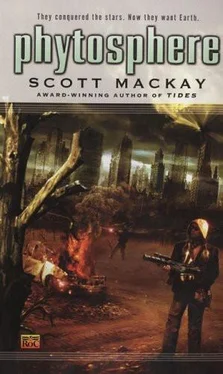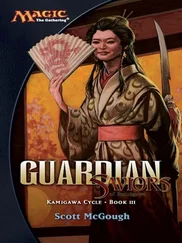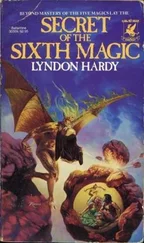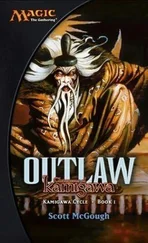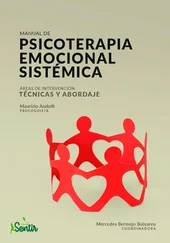He showed the tape from Copernicus—poor Kev floating the ridiculous Smallmouth 2 up into the laboratory-created phytosphere, the orbiting Platform 2, the stress band, and the whole shroud disintegrating when the gravitational pressure became too great.
Then he went through for them the exact measurements he had taken, particularly how much they had to increase the Moon’s gravity—how forceful they had to make the stress band—just what they had to do to the phytospheric tides in order to break the whole thing apart.
“What many of you don’t know is that at one time the Moon was a lot closer to Earth. Geological evidence suggests much higher tides a million years ago. Why were the tides higher? As a hydrographer, I’ve made an in-depth study of this phenomenon. The tides were higher because the Moon’s gravitational pull was stronger. The Moon’s gravitational pull was stronger because it was that much closer back then.
I believe the Tarsalan phytosphere control device is a gravitational field apparatus. They have a technological culture that is over a million years old. Follow the natural history of the two technological cultures we know, us and the Tarsalans, and you see we learn to control, one by one, the forces that surround us. Fire, wind, electromagnetism, fission, fusion, solar…and in the singularity drive, humankind is now taking its first small steps at controlling gravity. A million years from now, controlling gravity will be child’s play for us, just as it is for the Tarsalans. Have you ever wondered why the TMS doesn’t spin; why it doesn’t employ that particularly primitive technique for establishing artificial gravity? What about the thousands of other, smaller Tarsalan craft? Same thing. They don’t need to spin because the Tarsalans have devised a more advanced way of controlling this fundamental force.”
Ira interrupted him. “In other words, you’re telling us something we already know, that Tarsalan engineering capability is far more advanced than ours. Gerry, they’ve taken our inventory. Say you’re right, and a gravitational device of some sort is what controls the phytosphere. Say in fact that the phytosphere control device U.S. Forces destroyed actually operated on gravitational principles. Don’t you think the Tarsalans would build a new one and save the Earth if they had the materials in inventory? I have an idea of what it takes to create an artificial gravitational field. Each time we burn one of our singularity drives, we get a gravitational field as a side effect. We’re talking cutting-edge physics here.
And to make a gravitational field strong enough to destroy the phytosphere, you would need laboratory resources so vast that I don’t think they could be developed by us or by the Tarsalans in the remaining time Earth has left. You give us a timetable of four weeks. Gerry…that’s just too much to believe.
Especially when so far you’ve given us nothing.”
“I’ve got the timetable right here, Ira. You can take a look for yourself.”
“But how do you expect to develop and implement an artificial gravitational field on such a gargantuan
scale when we have such minimal resources on the Moon? If you combined every singularity drive we have, you wouldn’t even reach one one-thousandth of the power you would need for something like this.
No offense, Gerry, but I think this meeting is adjourned.”
“I never said I was going to develop and implement an artificial gravitational field.”
“Then why are we here, and where is this going?”
“If you’ll let me discuss the physics of the thing…” He motioned at all his measurements.
Ira threw up his hands. “Be my guest. You’re the scientist .” He loaded the word with derision.
“Going back to what I was saying about the Moon—a million years ago it was a lot closer to Earth, and its gravitational pull was that much stronger.” He looked around at his audience—showgirls, movers and shakers, cannabis bar owners, small-time councilors, pimps, and prostitutes—and he knew they all had mothers and fathers, perhaps brothers and sisters, and even children. A great emotion swelled in his chest as he thought of Glenda, Hanna, and Jake. “I don’t need anything like a complex Tarsalan gravitational device. I just need simple physics. And simple physics tells me that we can save the Earth. It tells me that it’s our duty and responsibility to save our suffering fellow human beings on Earth. And as for the engineering miracles involved? They’re not miracles at all. The math is so perfectly juvenile that even a child can understand it.”
He leaned forward over the lectern. “I need a mass of sufficient size to act upon the Moon, a force that will push the Moon, in the short term, two thousand miles closer to the Earth. This repositioning of the Moon will exert the necessary gravitational force to destroy the phytosphere. To get that result, I require a planetoid-sized body roughly twelve miles across striking the Moon at approximately a hundred miles per second. This will degrade the Moon’s orbit the necessary distance, and thereby increase its gravitational pull enough to fracture and destroy the phytosphere.
He lifted his hands because he saw Ira rising with what looked like a million objections.
“Ira, please… stop.”
“What happens to the Moon when this planetoid-sized body strikes it at a hundred miles per second? I mean…Ger…why don’t you just hand out loaded revolvers and we can get it over with?”
“If the Moon had an atmosphere, Ira… if the Moon had oceans… but it doesn’t. It’s just a rock. Fire a bullet at a big rock and see what happens. Not much. Mitch and I have done the calculations. If a body this size were to hit the Earth, you’re right, it would be a planet killer. But not so on the Moon. The Moon is designed to take hits. It’s been taking hits nonstop for the last four billion years. A body this size strikes the Moon, and yes, I admit, it will hit the surface with a force of nineteen million megatons, create a peak-ring crater two hundred and twenty-five miles across and six miles deep, and generally shake up the Moon. But it won’t be a planet killer. Everybody will survive. And there’ll be minimal damage to the Moon’s infrastructure.”
“Why should we believe you?” asked Ira. “And how are you going to pull it off?”
Gerry turned to Mitch. “Mitch?”
Mitch nodded and got up. “Uh…Ira…it’s possible. And it’s feasible with the…the inventory AviOrbit has on hand. We take the FMC Transit Collective drives and we boom them—like a big log boom. We
take them out to the asteroid belt. We already have our…designated body. Gaspra, if you want to know, as it more or less coincides with our dimensional requirements. I’m really sorry, Ira, for going behind your back like this.”
“You’re not going to use the FMC Transit Collective drives.”
Mitch kept going, despite being cowed. “We boom these drives together and we take them out to the… asteroid belt. I know… I know… pretty wild… but, you know, I’ve gone over all the math… and actually I’ve had some of the telemetry guys… and we boom them to one of our freighters… we were thinking the Prometheus, because she’s just been freshly serviced and fueled, and she’s ready to go…”
Mitch continued to outline the whole scheme in a quavering voice: how they would fly the Prometheus to the asteroid Gaspra because Gaspra was ideally located in relation to the Moon at this point in its orbit; how they would then anchor the Prometheus to the “front” of the asteroid, then drill the five FMC
Transit Collective Drives into the body of the asteroid and lay in a collision course for the Moon; explained that the crew would consist of himself as engineering specialist, Gerry as science specialist, and Ian Hamilton as pilot; and how, at the last moment, as Gaspra came within striking distance, the crew would eject in a special survival pod.
Читать дальше
